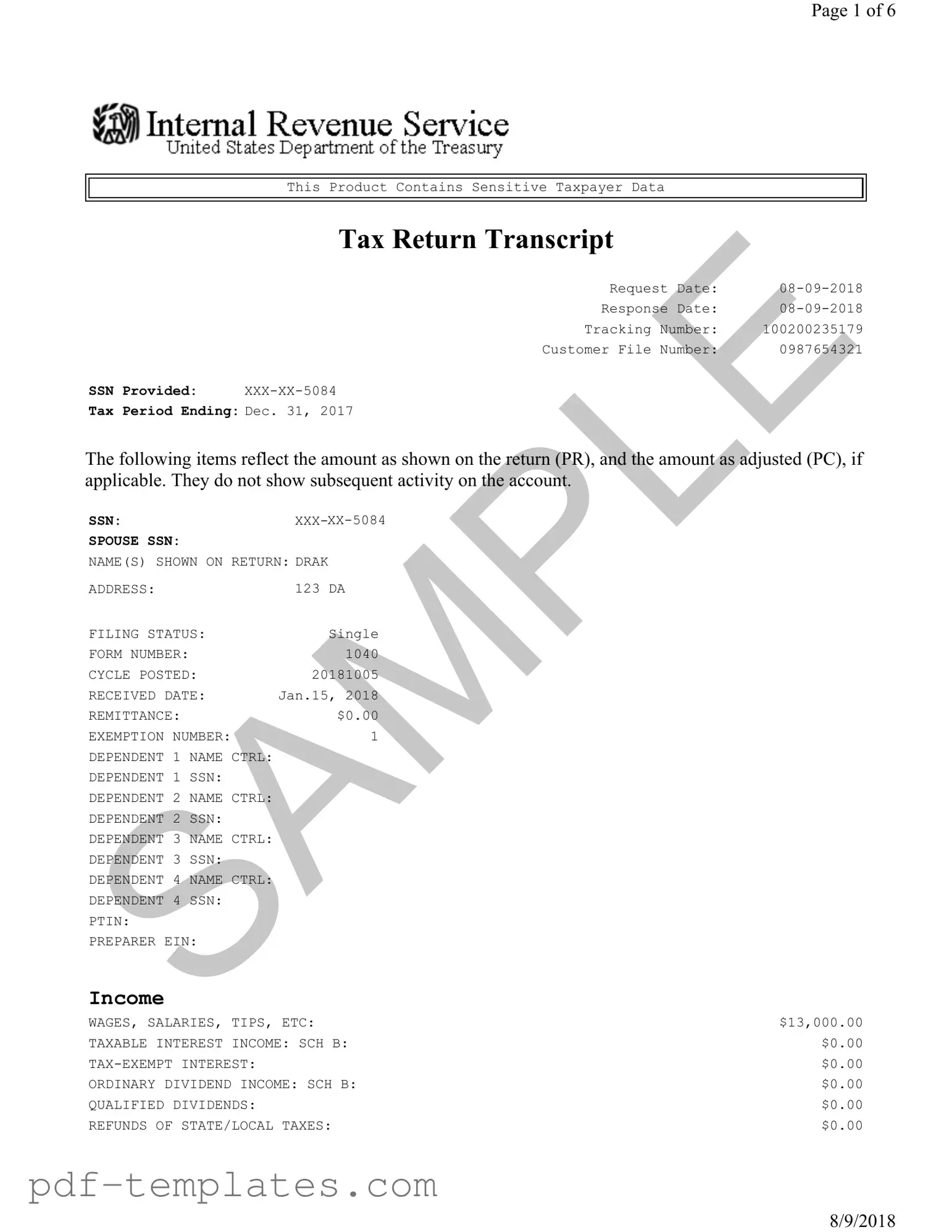The IRS Form 1040 is a comprehensive document used by individuals to file their annual income tax returns. Like the Sample Tax Return Transcript, it includes detailed information about income, deductions, and credits. The Form 1040 is the primary form for reporting personal income, while the transcript summarizes key data from this form, making it easier for taxpayers to verify their tax information without needing the complete return.
The IRS Form W-2 is issued by employers to report an employee's annual wages and the taxes withheld. Similar to the Sample Tax Return Transcript, it provides crucial information about income, including wages and tips. The W-2 serves as a source document for the income reported on the tax return, and the transcript reflects these earnings in a summarized format, aiding in cross-verification of reported income.
The IRS Form 1099 is used to report various types of income received by individuals who are not employees, such as freelancers or contractors. The Sample Tax Return Transcript includes summarized income data that may originate from 1099 forms. Both documents play a role in ensuring accurate reporting of income, with the transcript providing a consolidated view of income sources reported on various 1099 forms.
The IRS Form 4868 is the application for an automatic extension of time to file a tax return. While the Sample Tax Return Transcript does not serve as an extension request, it may reflect the tax liability or refund amount that would be due after the return is filed. Both documents are linked through the tax filing process, as the extension allows taxpayers more time to prepare their returns, which will ultimately be summarized in the transcript.
The IRS Form 8862 is used to claim the Earned Income Tax Credit (EITC) after a previous denial. Similar to the Sample Tax Return Transcript, which may reflect credits claimed, Form 8862 is necessary for individuals who have previously been denied the EITC to prove eligibility for future claims. Both documents highlight the importance of accurate tax credit reporting and compliance with IRS requirements.
The IRS Form 8888 allows taxpayers to allocate their tax refund to multiple accounts or use it for specific purposes. While the Sample Tax Return Transcript shows the total refund amount, Form 8888 provides a method for distributing that refund. Both documents are essential during the refund process, with the transcript summarizing the overall tax situation and the 8888 detailing how the refund will be managed.
The IRS Schedule C is used by sole proprietors to report income and expenses from a business. The Sample Tax Return Transcript includes summarized business income, which is derived from the information reported on Schedule C. Both documents are interconnected, as the transcript provides a snapshot of the business's financial performance while the Schedule C offers a more detailed breakdown of the income and expenses involved.
The IRS Form 1040-X is the amended tax return form used to correct errors on a previously filed Form 1040. While the Sample Tax Return Transcript reflects the original return data, Form 1040-X provides a way to amend that information. Both documents are crucial in ensuring that taxpayers maintain accurate records and comply with tax regulations, with the transcript serving as a reference point for the original filing.
